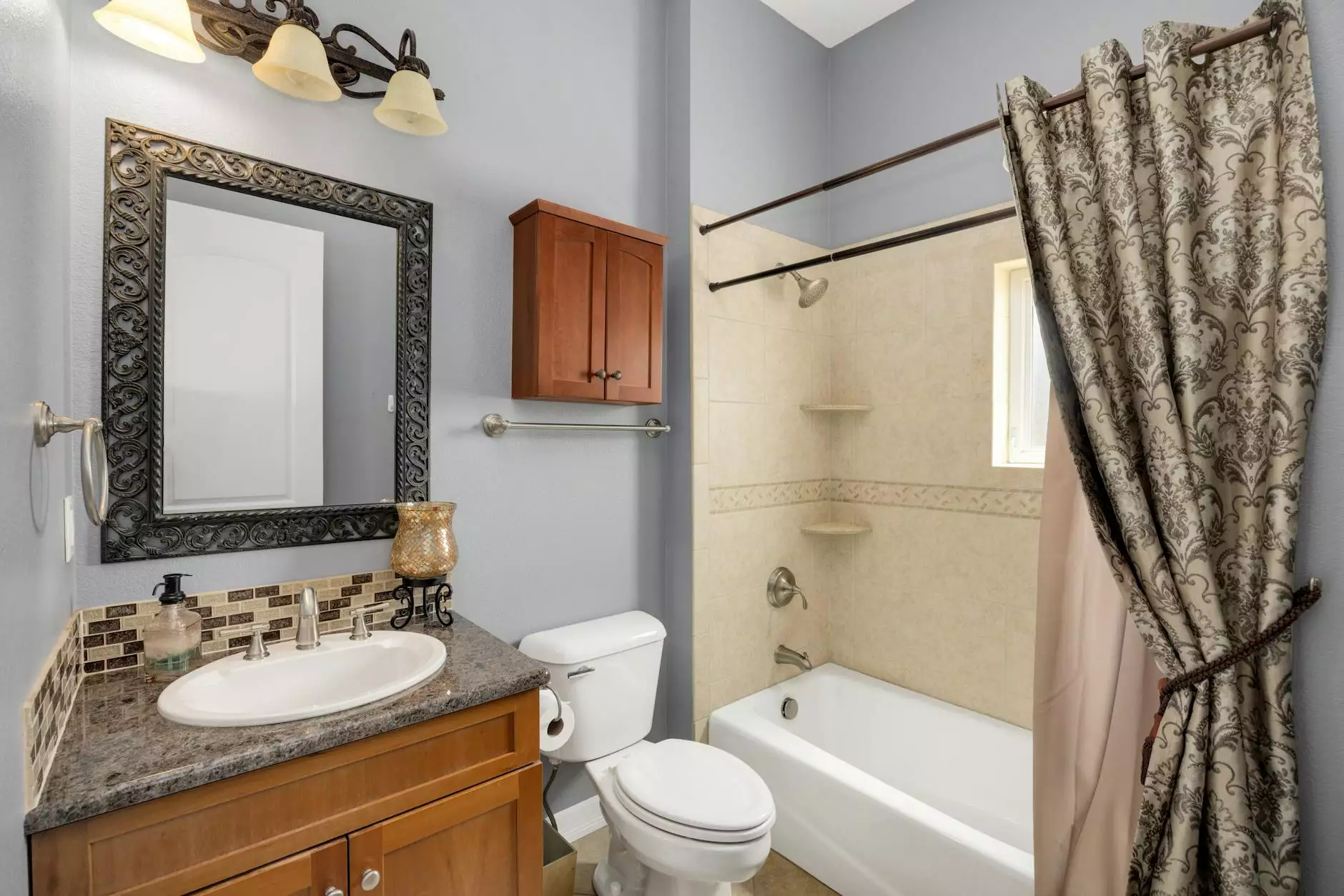Understanding Bathroom Plumbing Pipes: A Comprehensive Guide for Homeowners

When it comes to home services, understanding the plumbing system is crucial for any homeowner. Particularly, the bathroom plumbing pipes play a significant role in ensuring that your home functions smoothly. This article will delve into various aspects of bathroom plumbing pipes, including types, installation, maintenance, and common issues.
The Importance of Bathroom Plumbing Pipes
The plumbing system in your bathroom is essential for both functionality and hygiene. Here’s why bathroom plumbing pipes are so critical:
- Water Supply: They supply clean water for drinking, bathing, and cleaning.
- Drainage: Ensure that waste water is effectively drained away, preventing clogs and backups.
- Home Value: Efficient plumbing systems can enhance the overall value of your home.
- Health and Safety: Proper plumbing prevents health hazards associated with poor drainage and leaking pipes.
Types of Bathroom Plumbing Pipes
When considering bathroom plumbing pipes, it’s important to understand the different types available on the market:
1. PVC Pipes
Polyvinyl Chloride (PVC) pipes are commonly used for drainage systems. They are lightweight, resistant to corrosion, and fairly easy to install. Their smooth interior walls prevent build-up of debris, reducing the likelihood of clogs.
2. PEX Pipes
Cross-Linked Polyethylene (PEX) has gained popularity in recent years for supply lines. They are flexible, allowing for easier installation around corners and obstacles. Moreover, PEX pipes are resistant to scale and chlorine, making them a reliable choice for bathroom plumbing.
3. Copper Pipes
Copper is a traditional choice for plumbing. Known for its durability and resistance to bacteria, copper pipes are highly efficient for hot and cold water supply. However, they can be more expensive than other options and require careful installation.
4. Galvanized Steel Pipes
Once a common choice, galvanized steel has fallen out of favor due to issues with rust and corrosion over time. While they are strong, they are typically not recommended for new installations in bathrooms due to potential health risks associated with rust contamination.
Installation of Bathroom Plumbing Pipes
Installing bathroom plumbing pipes is a task that requires a fair amount of knowledge and skill. If you’re considering DIY, here are the steps you should follow:
Step 1: Planning
Before starting, create a detailed plan of your plumbing layout. Ensure that all local building codes are followed to avoid potential fines. Map out where each fixture, such as the sink, shower, and toilet, will be located in relation to the plumbing pipes.
Step 2: Gathering Tools and Materials
Gather all necessary tools and materials, which may include:
- Pipes and fittings (PVC, PEX, or copper)
- Pipe cutter or hacksaw
- Pipe wrench
- Measuring tape
- Soldering tools (for copper)
- Teflon tape
- PVC cement (for PVC pipes)
Step 3: Cutting and Fitting Pipes
Measure and cut the pipes to fit your planned layout. Ensure that the cuts are straight for a proper seal. Use the appropriate fittings to connect different sections of plumbing. For PEX, you will need crimp rings and a crimping tool.
Step 4: Securing Pipes
Once the pipes are fitted together, secure them using clamps and brackets. This prevents movement which can lead to stress and potential leaks over time.
Step 5: Testing Your System
Before closing up the walls or floors, it’s crucial to test your plumbing. Turn on the water supply and check for leaks. Repair any issues before finishing the installation.
Maintenance Tips for Bathroom Plumbing Pipes
Maintaining bathroom plumbing pipes is essential to prolong their lifespan. Here are several maintenance tips:
1. Regular Inspections
Perform regular inspections of exposed pipes. Look for signs of leaks, corrosion, or wear and tear. Early detection can save you from extensive repairs later on.
2. Use Drain Screens
Install drain screens in sinks and showers to catch debris and hair that can cause clogs. Regularly clean these screens to maintain proper flow.
3. Avoid Chemical Drain Cleaners
Using harsh chemical drain cleaners can cause more harm than good. Instead, opt for natural alternatives or call a professional if you encounter a stubborn clog.
4. Insulate Pipes
In colder climates, insulate pipes to prevent freezing and bursting. This is particularly important for pipes in external walls or unheated areas.
Common Issues with Bathroom Plumbing Pipes
Even with proper maintenance, issues can still arise. Here are some common plumbing problems you may encounter:
1. Clogged Drains
Clogs caused by hair, soap buildup, and foreign objects are common in bathrooms. Regular cleaning and the use of a plunger can address minor clogs, but persistent problems may require professional intervention.
2. Leaky Pipes
A leaking pipe can lead to water damage and mold growth. If you notice wet spots on walls or ceilings, it may indicate a leak. Address this promptly to prevent severe damage.
3. Low Water Pressure
Low water pressure can be a sign of clogs or leaks within your plumbing system. Inspect your fixtures and the plumbing lines for blockages or deterioration.
4. Pipe Corrosion
Older pipes, especially those made from galvanized steel, can corrode over time. If your water has a metallic taste or discoloration, consider an inspection to evaluate potential corrosion issues.
Choosing the Right Plumbing Company
For installation, repair, and maintenance of bathroom plumbing pipes, it's wise to choose a reliable plumbing company like White Plumbing Company. Here are some benefits of working with professionals:
1. Expertise and Experience
Professional plumbers have the necessary training and experience to handle any plumbing issue efficiently. They can provide tailored solutions that you might not consider as a DIY homeowner.
2. Quality Workmanship
Hiring professionals ensures that the work is done correctly the first time. This can save you from costly mistakes and future repairs.
3. Safety
Plumbing can be hazardous, especially when dealing with gas lines or heavy equipment. Professional plumbers know the safety protocols to follow, minimizing risks.
4. Warranty and Follow-Up
Many professional plumbing services offer warranties on their work, giving you peace of mind. Additionally, they can provide follow-up services to ensure everything remains in working order.
Conclusion
Understanding bathroom plumbing pipes is essential for every homeowner. From installation to maintenance and troubleshooting common issues, being informed can help you maintain a healthy plumbing system. For reliable services, trust professionals like White Plumbing Company. They offer expert solutions for all your home services in plumbing and water heater installation/repair.
Invest in the health of your plumbing system today by staying informed and taking proactive measures in maintenance and care.



